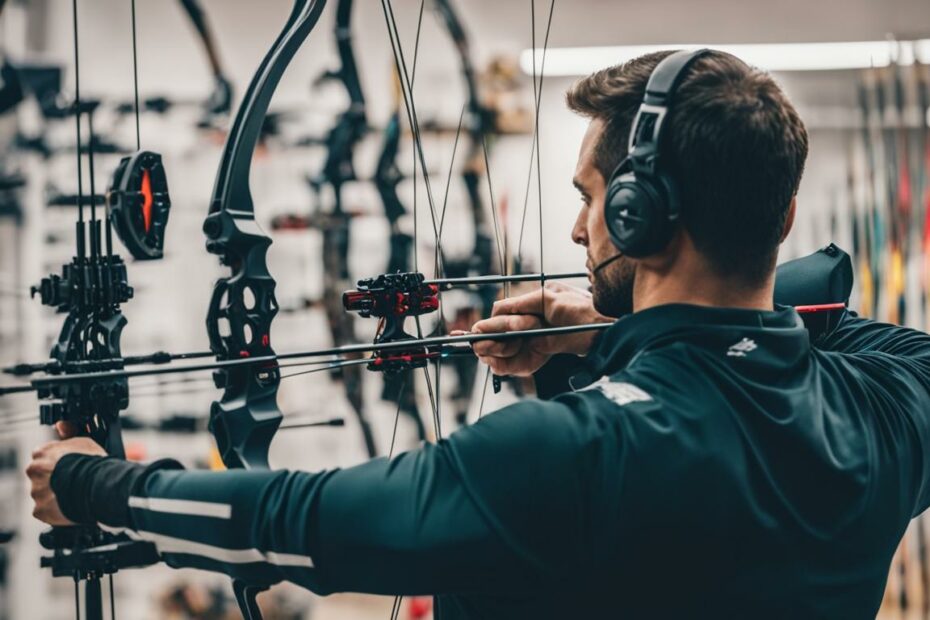There are two main categories of archery equipment: recurve and compound bows. Learning the differences between these two types of bows will help you decide which is the right choice.
Recurve bows are a type of traditional archery bow that has a single string between two limbs. They have a distinctive curve at the end of their limbs, allowing for a higher draw strength. Recurve bows are typically shot without sight, and the archer pulls the string back with their fingers.
Conversely, compound bows are a more modern bow type with extra strings, cables, and cams.
They are usually shorter and more compact than recurve bows and use mechanical advantages to reduce the weight the archer has to hold at full draw.
Compound bows have the advantage when comparing the power and performance of recurve and compound bows. Their mechanical design allows for a higher arrow speed and more energy to be imparted into the arrow.
However, it’s important to note that some recurve bows can still offer impressive performance due to constant developments in limb design.
In terms of accuracy and ease of use, compound bows are generally easier to be precise due to their mechanical advantages, such as sights and release aids. Recurve bows require the archer to hold the full draw weight while aiming, which can be challenging.
However, many recurve archers appreciate the craftsmanship and mastery required to shoot accurately without mechanical devices.
When considering weight, maintenance, and accessories, recurve bows are generally lighter and require minimal upkeep compared to compound bows. Recurve bows have limited accessory options compared to compound bows, which can be easily customized with various attachments.
Ultimately, choosing between a recurve bow and a compound bow comes down to personal preference and individual needs.
Factors such as experience level, shooting style, intended use, and physical capabilities should be considered when selecting the right bow for you. It may also be helpful to try out both types of bows to see which one you enjoy shooting the most.
Understanding Recurve Bows
A recurve bow is a traditional archery bow with a single string between two limbs. The limbs are the part of the bow that bends when the string is pulled.
Recurve bows have a distinctive curve at the end of their limbs, which allows for a higher draw strength. These bows are typically shot without sight; the archer pulls the string back with their fingers.
Recurve bows have been used throughout history and have a solid connection to traditional archery practices. They offer a sense of simplicity and authenticity that many archers find appealing. Additionally, their historical appeal makes them a popular choice for enthusiasts and those who enjoy the traditional style of archery.
However, there are some trade-offs to consider when using a recurve bow. One significant factor is the requirement for the archer to hold the full draw weight.
Unlike compound bows with a let-off feature, recurve bows place the full weight of the draw on the archer’s fingers and muscles. This can be physically demanding and requires more strength and endurance to shoot accurately over extended periods.
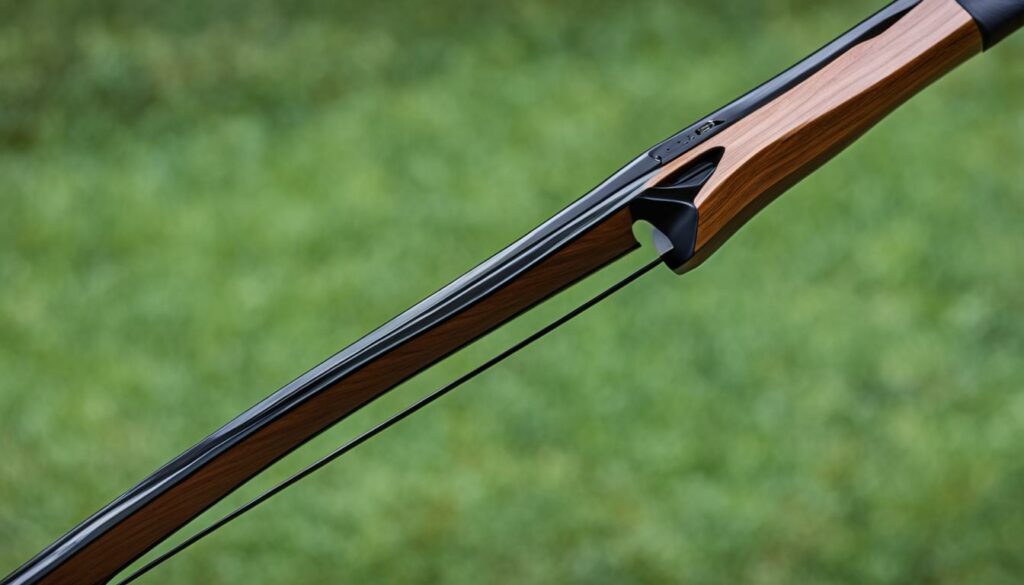
| Advantages of Recurve Bows | Disadvantages of Recurve Bows |
|---|---|
|
|
Exploring Compound Bows
A compound bow is a more modern bow that has gained popularity in archery. It features extra strings, cables, and cams, which set it apart from traditional recurve bows. These additional components give compound bows distinct accuracy and ease of use advantages.
One key feature of compound bows is the cams on the end of the limbs. These cams provide an added mechanical advantage, allowing for a more efficient energy transfer from the limbs to the arrow.
As a result, compound bows are known for their high arrow speeds and improved accuracy compared to recurve bows.
Compound bows are also shorter and more compact in design, making them easier to handle and maneuver. This is particularly beneficial for archers who engage in activities such as hunting or field archery, where mobility and precision are crucial. The compact size also makes them easier to transport and store.
One major advantage of compound bows is the “let-off” feature. This feature reduces the weight the archer has to hold at full draw. As the string is drawn back, the cams rotate and reach a point where the archer experiences significantly less resistance.
The let-off feature allows archers to hold the bow at full draw for longer, improving accuracy and reducing fatigue.
While compound bows offer unique advantages, they also have a few considerations. Due to their complex design with multiple components, compound bows may require more maintenance than recurve bows.
Regular inspections and adjustments are necessary to ensure optimal performance. Additionally, the added mechanical elements can increase the bow’s overall weight.
When exploring the pros and cons of compound bows, it’s essential to consider your preferences and shooting style. Compound bows excel in modern archery practices, offering increased accuracy, power, and ease of use.
However, a recurve bow may be a better fit if you prefer the simplicity and historical appeal of traditional archery.
Table: Pros and Cons of Compound Bows
| Pros | Cons |
|---|---|
| High arrow speeds and accuracy | Requires more maintenance |
| Compact design for increased mobility | Additional weight due to components |
| Let-off feature reduces holding weight |
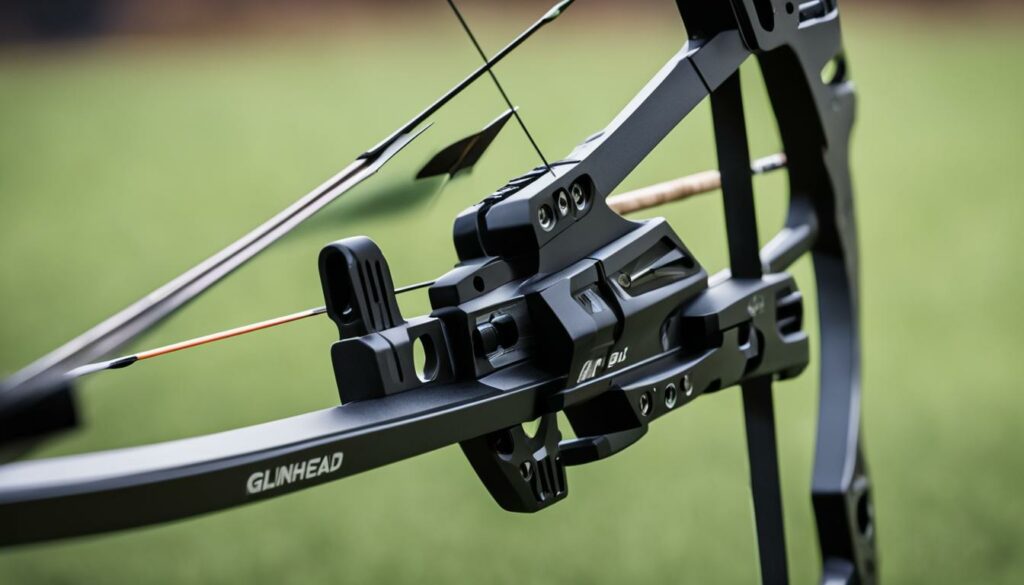
Comparing Performance and Power
The innovative design of compound bows, with their cams and mechanical components, allows for higher arrow speeds and greater energy transfer to the arrow. Compound bows can shoot arrows at speeds over 300 feet per second, while recurve bows typically achieve 170-180 feet per second.
Here’s a comparison of the performance and power of recurve bows and compound bows:
| Archery Equipment | Arrow Speed |
|---|---|
| Recurve Bow | Around 170-180 feet per second |
| Compound Bow | Over 300 feet per second |
It’s important to note that constant developments in recurve bow limb design have improved their performance in recent years. Some modern recurve bows can still offer impressive power.
However, with their advanced technology and mechanical advantages, compound bows remain the top choice for archers seeking maximum power and performance.
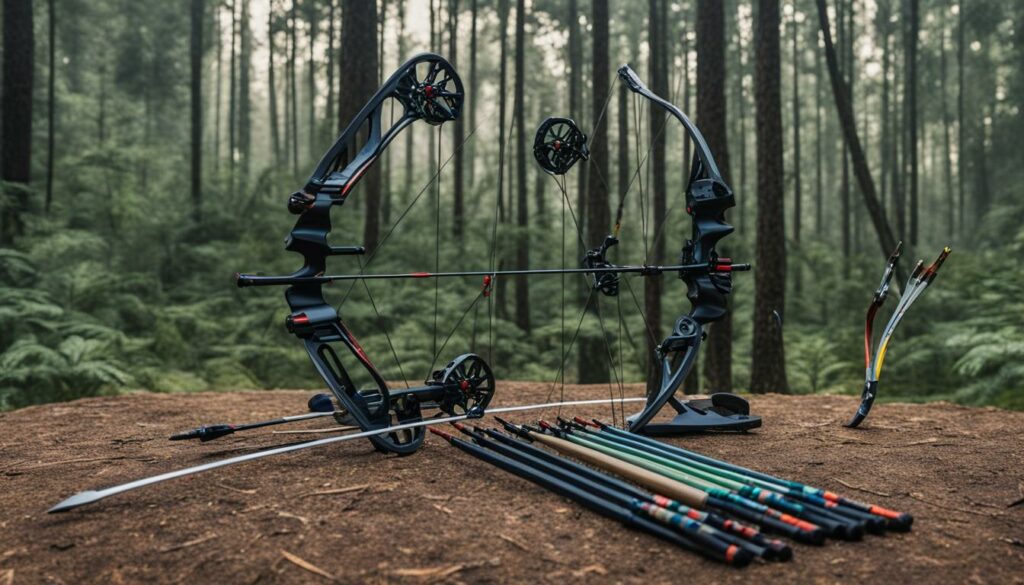
Considering Accuracy and Ease of Use
Compound Bow Accuracy
Compound bows are well known for their exceptional accuracy. This is mainly due to their mechanical advantages, such as sights and release aids. These additional features help ensure consistent and precise shots, even for less experienced archers.
Compound bows also come with a let-off feature, reducing the weight the archer has to hold at full draw. This allows for a more controlled and stable aim, improving accuracy.
Recurve Bow Accuracy
On the other hand, recurve bows require the archer to hold the full draw weight while aiming. This can be challenging, especially for beginners or archers with less upper body strength. Maintaining full draw weight can impact accuracy, introducing more room for error.
However, it’s worth noting that many recurve archers appreciate the craftsmanship and mastery required to shoot accurately without relying on mechanical devices. The simplicity of recurve bows can provide a rewarding challenge for those who prefer a more traditional approach.
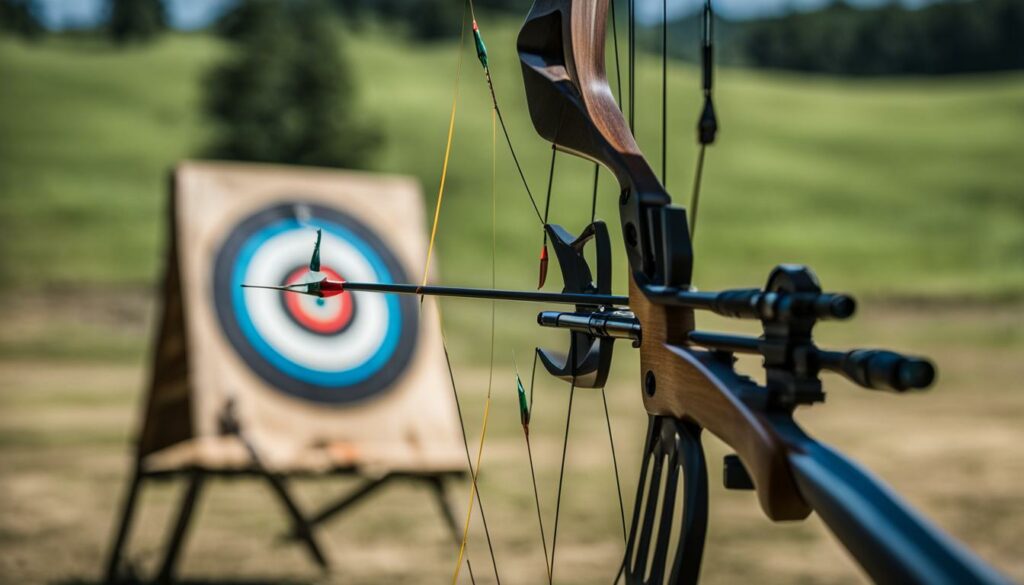
| Compound Bow | Recurve Bow | |
|---|---|---|
| Accuracy | High | Moderate to High |
| Ease of Use | Easy | Moderate to Difficult |
Considering Weight, Maintenance, and Accessories
Weight
Due to their simpler design, recurve bows are generally lighter than compound bows. This makes them popular for hunters who often need to carry their bows for extended periods. Lighter-weight bows can also be advantageous for beginners or individuals with physical limitations.
Maintenance
Maintenance requirements vary between recurve bows and compound bows. Recurve bows have a simpler design with fewer moving parts, so they generally require less maintenance.
Conversely, compound bows have additional strings, cables, and cams, making them more complex and potentially requiring more regular upkeep to ensure optimal performance.
Following manufacturer guidelines and performing routine maintenance is essential to keep your bow in top condition.
Accessories
Compound bows offer more customization and accessory options than recurve bows. They can be easily equipped with sights, stabilizers, and other attachments to enhance accuracy and the shooting experience.
Due to their traditional and simplistic design, recurve bows have more limited accessory options. This may appeal to archers who prefer a more traditional and minimalistic approach to archery.
Choosing the Right Bow for You
When it comes to archery, choosing the right bow is a crucial decision. With the wide range of options available, it’s essential to consider your individual needs and preferences.
Experience level: A recurve bow might be a great starting point if you’re a beginner. Its simplicity allows beginners to learn proper shooting techniques and develop their skills.
On the other hand, if you have more experience and are comfortable with advanced archery techniques, a compound bow can offer you more precision and control.
Shooting style and intended use: Consider your shooting style and what you plan to use the bow for. If you’re interested in traditional archery or want to participate in historical reenactments, a recurve bow can provide a sense of nostalgia and authenticity. A compact and powerful compound bow might be a better fit if you’re looking for a bow specifically for hunting.
Physical capabilities: Your physical capabilities, such as strength and coordination, should also be considered. Recurve bows require the archer to hold the full draw weight, which can be physically demanding. If you have any physical limitations or prefer a more comfortable shooting experience, a compound bow with its let-off feature can reduce strain and allow you to hold the bow longer.
FAQ
What is the difference between a recurve bow and a compound bow?
A recurve bow is a traditional archery bow with a distinctive curve at the end of its limbs, while a compound bow is a more modern bow with extra strings, cables, and cams.
What are the advantages of using a recurve bow?
Some advantages of recurve bows include their simplicity, historical appeal, and connection to traditional archery.
What are the advantages of using a compound bow?
Compound bows have the advantage of a “let-off” feature that reduces the weight the archer has to hold at full draw, making it easier to aim and hold the bow for longer periods.
Which type of bow offers more power and performance?
In terms of power and performance, compound bows have the advantage due to their mechanical design, which allows for a higher arrow speed and more energy to be imparted into the arrow.
Which type of bow is more accurate?
Compound bows are generally easier to be precise due to their mechanical advantages, such as sights and release aids.
Are recurve bows lighter than compound bows?
Yes, recurve bows are generally lighter than compound bows due to their simpler design.
Do recurve bows require more maintenance compared to compound bows?
No, recurve bows require minimal upkeep compared to compound bows, which have more moving parts and may need regular maintenance.
Can compound bows be easily customized with accessories?
Yes, compound bows can be easily customized with sights, stabilizers, and other attachments.
How do I choose the right bow for me?
The choice between a recurve bow and a compound bow ultimately comes down to personal preference and individual needs. Consider your experience level, shooting style, intended use, and physical capabilities.
